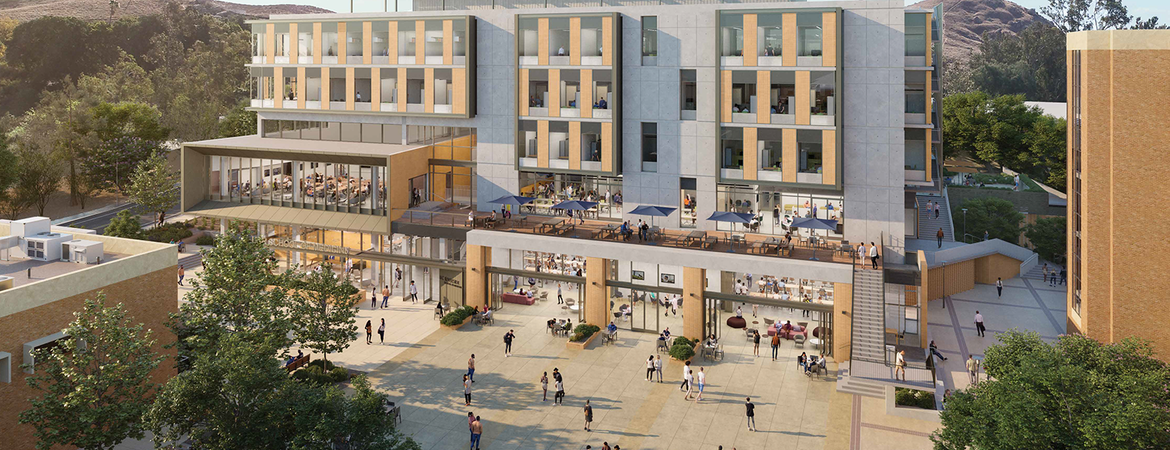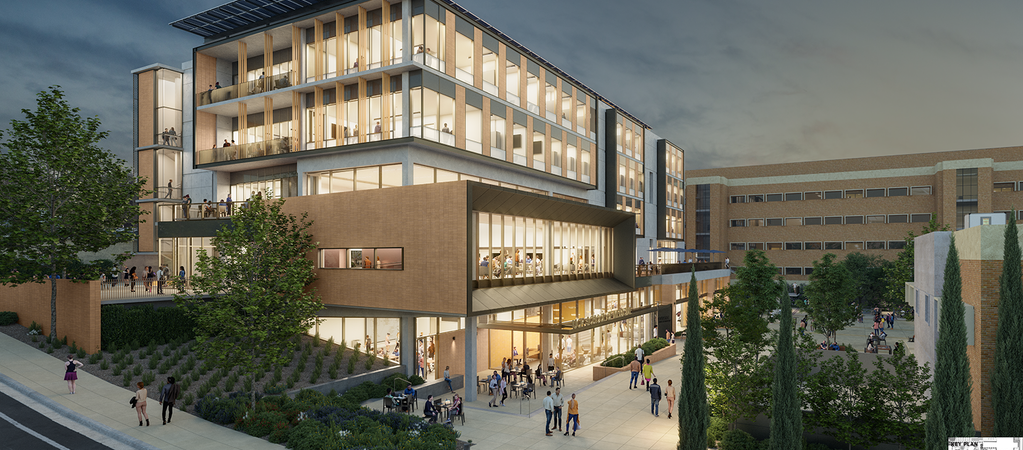
The Regents of the University of California have given final approval for the construction of the School of Medicine’s new Education Building II at UC Riverside. The vote, which approved the final design, the full budget, and the California Environmental Quality Act, or CEQA, findings, took place during the Regents’ meeting on Wednesday, March 17, 2021.
The vote also confirmed the selection of Hensel Phelps Construction/CO Architects as the design-build partner for the project. The team was selected by the School of Medicine Ed II working group and the UCR Office of Planning, Design and Construction following a year-long review process.
“I would like to thank the UC Regents for their approval of this project, which will give us the space we need to grow our class sizes to 125 students per year and continue to fulfill the mission of increasing the number of physicians in the underserved inland Southern California,” said Dr. Deborah Deas, vice chancellor of health sciences and the Mark and Pam Rubin Dean of the UCR School of Medicine. “I am thrilled with the design concept that our design-build partner Hensel Phelps Construction/CO Architects developed. There is so much to be excited about.”
The School of Medicine’s Education Building II, or SOM Ed II, will be located immediately south of the current SOM Education Building and east of Boyce Hall. The LEED platinum-certified facility will have approximately 57,000 assignable square feet within 90,000 gross square feet. The design features an urban downtown theme that includes outdoor seating, terraces, and landscaping that will complement the existing buildings around it.
“This proposal was by far the best in combining all of our goals, including aesthetics, functionality, inclusiveness, value, top pedagogical design into one amazing learning environment,” said Dr. Brigham Willis, senior associate dean of medical education at UCR. “It will be one of the most innovative learning facilities in the nation, promoting collaboration. It will be a welcoming and open facility, where community, educational, and student events can be held.”
The California Legislature approved funding for the project as part of the State Budget Act of 2019. Construction on the building is set to begin this summer, with an anticipated completion in mid-2023.
“The SOM Ed II building will be a beautiful expression of the mission of the School of Medicine,” said Jacqueline Norman, campus architect. “I am excited about the creation of the new outdoor shared plaza. It’s wonderful when a new building project like this is able contribute so significantly to the campus public domain.”
The Hensel Phelps Construction/CO Architects team was selected from a pool of three teams following a four-month competitive design-build competition. They have been responsible for a variety of construction projects across higher education, including the recently completed $129 million, 180,000 square-foot Multidisciplinary Research Building, which provided UCR with wet and dry research laboratories, core laboratory support facilities, a vivarium, and space for faculty and academic support.
“The design-build team paid very close attention to the requests that we put forth in order to make this building our home, but also they listened to our ‘dream requests,’” said Dr. Emma Simmons, senior associate dean of student affairs at UCR. “They even went as far as including extra options we hadn't yet thought of to make this building the perfect choice.”
Deas expressed her thanks to the SOM Ed II Working Group, made up of Willis, Simmons, Chief of Staff Linda Reimann, Professor Christian Lytle, and Facilities Manager Cynthia Carolina; and the staff of the UCR Office of Planning, Design and Construction, who spent hundreds of hours working with the developers vying for the contract. The task was complicated by the pandemic, which forced the process to move online exclusively.
“Selecting a design team is not an easy task in the best of times, and COVID-19 forced us to quickly shift our process to virtual platforms in order to not create delays,” Carolina said. “The design-build teams had to quickly learn how to bring imagination and storytelling to Zoom, which made it more of a challenge. But everyone was committed to the process of finding the right team.”





